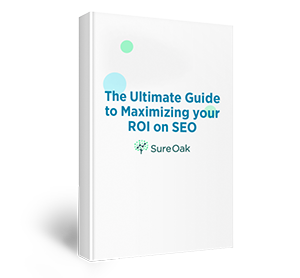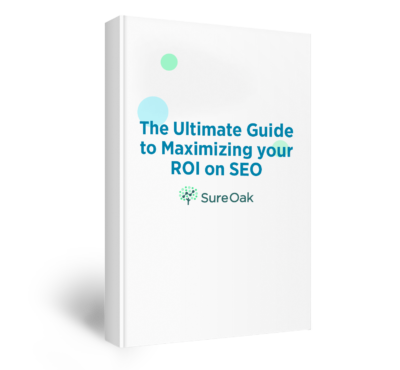If you’re involved with marketing for businesses, you probably hear a lot about search engine optimization (SEO) vs. social media. Unfortunately, most of the available material disregards their similarities.
Although SEO and social media marketing are different strategies, they complement each other beautifully. When one falls short, the other shines.
SEO and social media marketing are different strategies, but using them together can significantly expand your reach. That expanded reach can lead to better customer relationships, more traffic, and ultimately more revenue.
What Is Social Media Marketing and Why Is it a Powerful Tool?
Social media marketing uses platforms like Facebook, Instagram, and TikTok to promote a brand’s products or services.

As of 2023, the United States has 246 million social media users. That’s more than 72% of the total population. This is the only marketing channel that has that immediate and widespread reach.
Also, unlike many other marketing channels, social media is a two-way street. It lets customers engage with you as easily as you engage with them. Here are the most important reasons why that matters.
Building Relationships With Customers
Relationships grow through interaction. You don’t build a relationship with an author when you read their book, but a fan letter could turn into a budding friendship if they write back.
Social media lets you build those back-and-forth conversations with customers. You put yourself out there through shared content, profile information, posts, and ads.
According to a Sprout Social and Harris Poll study, 55% of consumers learn about new brands on social media. Another 68% report using social media to interact directly with companies.
Some interactions are service-related, such as reporting product issues or messaging customer support. Others are more social — liking or commenting on posts, re-sharing content, etc.
Both types of interactions build familiarity and personalize the brand, helping to develop a real relationship. Those relationships improve your brand awareness, making customers more likely to look to you when they have a need you can fill.
Measuring Marketing Efforts
Social media is a friendship-building tool, but it’s also a business strategy. Platforms like Facebook know that businesses depend on them, so they provide marketers with multiple data points to track their customer interactions.
Through your social media business account, you can track your performance via metrics, including:
- Website traffic: The number of people who click through to your website from your social posts.
- Engagement rate: The percentage of followers interacting with your posts through likes, comments, and shares.
- Social mentions: How many people or brands mention you on social media?
- Return on investment: Revenue earned per dollar spent on your social campaign.
Track as many or as few metrics as you need. A social media marketing agency like Sure Oak can help if it proves time-consuming.
Generating Leads
Social media encourages active engagement with content. When people encounter your posts and ads on their favorite social platforms, they’re prepared to interact. Enabling them to take the next step helps you turn those interactions into valuable lead captures.
Every content piece should leave the reader wanting to know more. Fulfill that desire by adding a call to action (CTA), such as an invitation to sign up for your email list or download a gated digital asset.
You can add a lead capture to almost any social post. For example, a YouTube video can invite viewers to click a link in the description, and an Instagram post can send visitors to your bio for a download opportunity.
Only some content pieces need a download option or lead capture form. However, the next step should always be available, even if it’s only a link to your website’s home page.
Importance of Social Media Presence
What you do on social media matters, but simply having a presence is an essential first step. An increasing number of people use social media to conduct brand research, even before they go elsewhere for more information.
According to DataReportal, 75% of internet users use social media to conduct brand research. Additionally, in Hubspot’s 2022 State of U.S. Consumer Trends report, 22% of consumers said they prefer social over other channels for brand discovery. And seven out of 10 Gen Z-ers said they find brands on social sites more than anywhere else.

Maintaining an up-to-date and active presence lets you stay top of mind with these shoppers. Many will come to you for basic information, such as your web address or contact details. Make sure your profile has answers to any questions a new customer might ask — but don’t stop there.
Your content should provide valuable information and insights to keep their interest. Your goal is to catch their attention and show them what you offer. If you leave them wanting more, they’ll follow you to your website to take the next step.
How Social Media Affects SEO
For many of today’s digital marketers, the all-important question for any marketing channel is whether it improves SEO. You’ll probably be happy to learn that your social media efforts can boost your search engine rankings, although not directly.
Google doesn’t use your social media activity to evaluate your website. Your website and social accounts are separate entities in the eyes of Google’s algorithms, so more followers and likes won’t move you up the search page.
Fortunately, social media makes reaching people who will engage with your brand easier. Popular keywords are incredibly competitive, and a new blog post might need to rank more highly enough to get readers’ attention.
However, if you share that same post on Facebook, the platform’s algorithm will show it to a percentage of your followers. The number of people who see your post will vary based on mysterious algorithmic factors, but consider this: Internet users spend an average of 147 minutes a day on social sites.
That’s almost two and a half hours of scrolling, adding many interested and motivated eyes to your blog post. More viewers mean more engagement and click-through to your website. The more clicks and website visiting time you have, the more attention Google will pay to your brand.
Boosting your content’s reach also gives you more opportunities to earn backlinks. A backlink tells Google that another website respects you enough to refer to your content. So backlinks are a definite boost to your SEO.
How Are SEO and Social Media Similar?
You know how social media can improve your SEO efforts, but you might still see them as separate strategies. To understand how to use them together, you must dive deeper.
Social media doesn’t just help SEO by connecting you to your audience. The two are more similar than you think concerning how SEO and social media work together.
Content Strategy
As you’ve learned, SEO and social media are crucial elements of your content marketing strategy. They both have content strategies of their own as well.
SEO content strategy uses content to rank for target keywords and drive more traffic to your website. Social media content strategies focus less on keywords, but attention and traffic are still primary goals.
Successful content looks the same in SEO and social media strategies. It’s comprehensive and authoritative but engaging to read, incorporating readability techniques like:
- Short paragraphs
- Varied sentence structure
- Inclusion of images and graphics
- Helpful headlines
- Audience-appropriate vocabulary
More readable content appeals to human audiences and Google algorithms. The reason is simple — Google prioritizes content based on its helpfulness to readers. So create content with your audiences in mind, and you’re creating content for Google, too.
Audience
Ultimately, your social media and SEO strategies have the same target audience. Considering that audience as a single group is essential because they fit into the same strategy. Whether they discover you via Facebook or a Google search, they end up in the same sales funnel.
When you understand your audience, you can build better relationships and use content more effectively. For instance, you recently published an article highlighting your particular service. As a result, you want to attract more people who need that service.
You know some people will find you on Google, so you integrate the keywords they’ll use to search. You apply SEO best practices technically and in terms of content creation. You hope Google’s algorithms will rank you highly so new followers will see you. You also post to your social media accounts to reach your followers.
But what about those people who have yet to see you on Google and still need to follow you? You’re targeting them with SEO, but you can also target them with paid social media ads. Paid ads let you show your ad to a particular demographic or interest group — Midwestern homeowners with children, for example.
You can also show your ad to people who resemble your current audience. Those target audiences are the same people you want to reach with SEO, meaning you can use the same audience personas.
Success Rate
SEO and social media marketing are highly effective at driving traffic to your site. According to Hubspot’s 2022 State of Inbound Marketing Report, they’re the top two channels for acquiring new customers.
That’s important to understand because they have very different timelines and pathways to success. SEO is a slower process. Google’s crawler bots need time to find and index your content, so a lot of “posting and waiting” is involved. After that, you continue working at it; you also can’t expect immediate results.
Social media moves much more quickly. Content can be viral today and in the rearview mirror tomorrow. If something ends up lost in the bustle, it’s unlikely to resurface. So you need to post frequently to keep up.
Social media and SEO work together because of these different timelines, not despite them. So while you wait for SEO to work, it’s important to keep posting content to social media. Organic and paid posts can reach your target audience before your SEO is ready.
What Is the Difference Between SEO and Social Media?
Now that you’ve learned about the relationship between SEO and social media, particularly how they work together, you can understand more about what makes them different.
First, consider their unique functions. SEO aligns your web content with what search engines want to see. You can get exponentially more clicks if you use the right techniques and your reputation is strong enough.
The difference is notable. According to Search Engine Journal, content that ranks number one on Google gets 28.5% of clicks, while number two gets just 15.7%. So by position seven, you’re down to 4%.

Those numbers aren’t there to scare you but to show you how challenging SEO can be. Using social media for business is often more gratifying since you’ll reach followers just by posting. Social media could be an objectively better tool, but it is quicker.
Also, SEO is more calculated and mathematical, while social media is about building relationships and making emotional connections. It currently connects with people, while SEO plays the long game. Both are necessary for sustained success.
How To Make the Decision To Use SEO, Social Media, or Both
Weighing SEO vs. social media marketing is challenging because they have different functions. Both help you reach new customers and stay connected with your audiences. Still, they work differently and serve distinct consumer purposes.
Instead of choosing one over the other, consider integrating them into your marketing strategy together. For example, use social media ads to generate leads and engage with new audiences. Also, create organic posts to stay in touch with followers.
Meanwhile, work on building up your SEO. Continue creating keyword-optimized content that offers reader value. Google will notice, and you can share the same content on social media.
It sounds like a lot, but you don’t have to go it alone. Sure Oak creates SEO-based marketing strategies customized to your business goals, using social media and other channels to reach your target audiences.
Schedule your free strategy session today to learn more.





